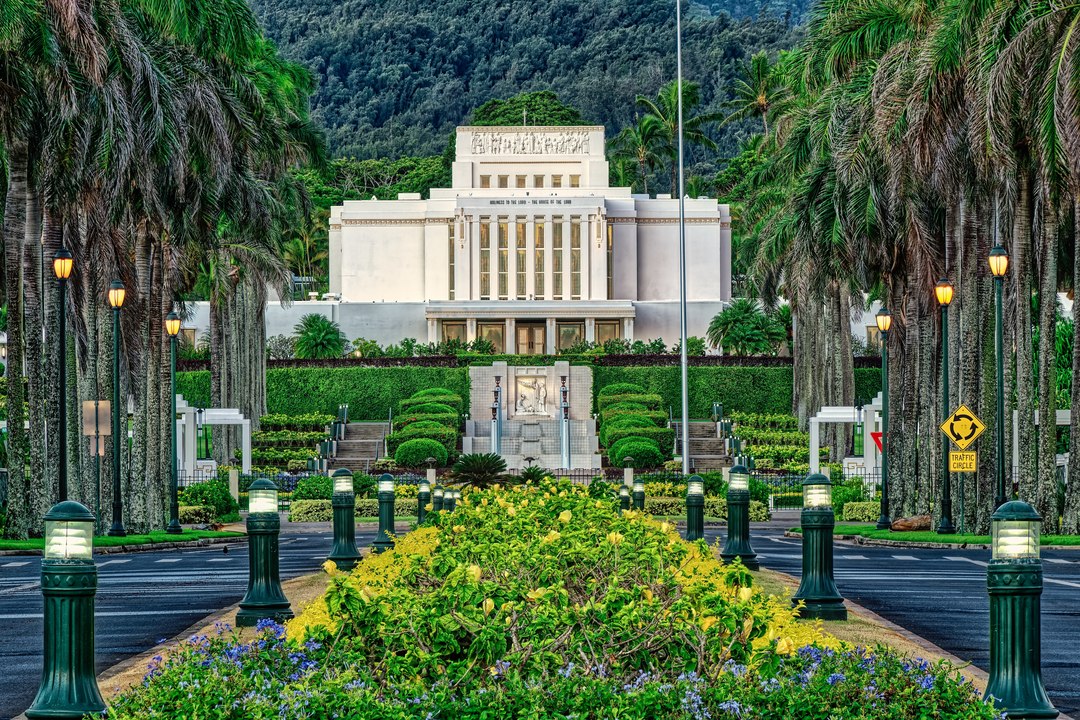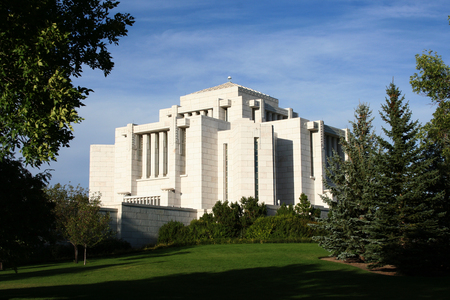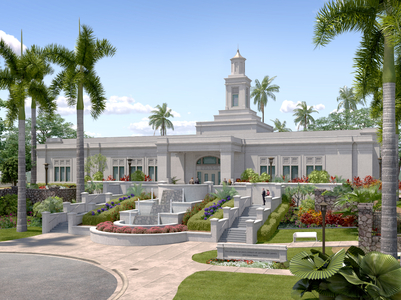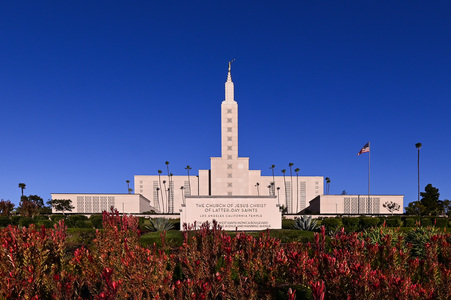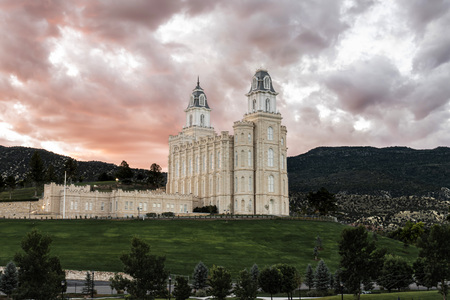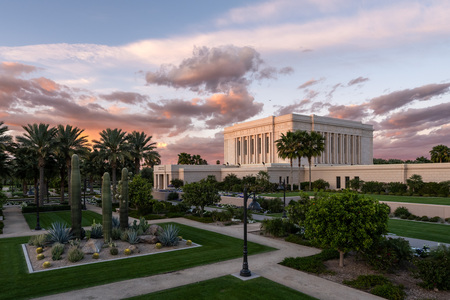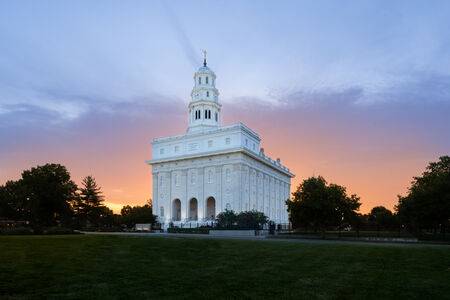Services
Visitors' center open to the publicNO arrival center available
NO patron housing available
Distribution center on site (Store Locator)
Site Dedication:
1 June 1915 by Joseph F. SmithAnnouncement:
3 October 1915Groundbreaking:
8 February 1916Dedication:
27–30 November 1919 by Heber J. GrantPublic Open House:
2–27 May 1978 | 25 daysRededication:
13–15 June 1978 by Spencer W. KimballPublic Open House:
22 October–13 November 2010 | 22 daysRededication:
21 November 2010 by Thomas S. MonsonSite:
11.4 acres | 4.6 hectaresExterior Finish:
Concrete made of native crushed lava rock and coral, reinforced with steel. It is dressed by pneumatic stone cutting tools to produce a white cream finishArchitectural Features:
Single attached central tower with a flat roofOrdinance Rooms:
Four instruction rooms (four-stage progressive), five sealing rooms, and one baptistryTotal Floor Area:
42,100 square feet | 3,911 square metersHeight:
50 feet | 15.2 metersElevation:
29 feet | 9 metersTemple Locale
Surrounded by lush Hawaiian flora on a gently rising hill that features cascading pools and a large fountain, the Laie Hawaii Temple graces the north shore of Oahu just a half mile from the Pacific Ocean. Travelers along Kamehameha Highway can't miss the striking Hale Laa Boulevard that leads the short distance from the highway to the temple. The exquisite boulevard features a tropical garden on one end and palm trees and decorative lights on the other. Sharing the temple grounds is a highly visited public visitors' center. Down the street is Church-owned Brigham Young University–Hawaii and Hawaii's number-one paid attraction, the Polynesian Cultural Center.
Temple Facts
The Laie Hawaii Temple was the first temple built in the Pacific islands (and in Hawaii Territory).
The Laie Hawaii Temple was the first temple "brought to the people," as it was the first temple dedicated outside of the state (or territory) where Church Headquarters was located.
The Laie Hawaii Temple was the first temple built outside of the continental United States.
The Laie Hawaii Temple is one of only seven temples where patrons progress through four ordinance rooms before passing into the Celestial Room. (The other six temples are the Manti Utah Temple, the Cardston Alberta Temple, the Mesa Arizona Temple, the Idaho Falls Idaho Temple, the Los Angeles California Temple, and the Nauvoo Illinois Temple.)
The Laie Hawaii Temple features beautiful hand-painted murals on the walls of its progressive-style ordinance rooms: Creation Room, Garden Room, World Room, Terrestrial Room (no murals), and Celestial Room (no murals).
The Laie Hawaii Temple was originally named the Hawaii Temple until it was renamed in 1999 following the announcement of a uniform naming guideline—the year following the announcement of the Kona Hawaii Temple.
The presentation of the endowment was originally delivered by live acting in the Laie Hawaii Temple.
At just 10,500 square feet, the Laie Hawaii Temple was the smallest temple the Church had ever constructed, though it has since been enlarged to over 40,000 square feet.
The Laie Hawaii Temple sits on the Church's original landholdings in Hawaii known as Laie Plantation. The 6,000-acre parcel was purchased in 1865 for $14,000.
The Laie Hawaii Temple stands adjacent to Church-owned Brigham Young University–Hawaii. The Church's other two universities; Brigham Young University in Provo, Utah, and Brigham Young University–Idaho in Rexburg, Idaho; also have adjacent temples.
The concrete exterior of the Laie Hawaii Temple was created using crushed rock and coral. For a time, it was painted a pale shade of green.
Carved friezes, created by sculptor Avard Fairbanks, decorate each side of the top of the Laie Hawaii Temple, depicting four dispensations of time: Old Testament Dispensation (west), New Testament Dispensation (south), Book of Mormon Dispensation (north), and Latter-day Dispensation (east).
The Laie Hawaii Temple was dedicated sixteen years before the creation of the first Hawaiian stake on Oahu in 1935.
Temple History
Announcement
President Joseph F. Smith was in Hawaii on business in the spring of 1915 when he was moved by a spiritual impulse to dedicate a site for the Laie Hawaii Temple. The action was later ratified by the brethren and publicly sustained in the October 1915 General Conference.
Construction
Before construction of the Laie Hawaii Temple could begin, the existing 30-by-90-foot chapel had to be relocated over a period of days using jacks, tackle, ropes, horses, steel pipe, and timbers to pull and push the nine-ton building down the hill. The building was later lost to fire on July 11, 1940, during a renovation project.
Construction of the temple came to a standstill when the supply of lumber ran out. Prayers were uttered, and two days later, a freighter was discovered stranded on a nearby coral reef. The captain offered his entire cargo to the saints if they would unload it for him. His cargo? Lumber—enough to complete the temple.
Dedication
The Laie Hawaii Temple was dedicated on Thanksgiving Day by President Heber J. Grant, just one year after the passing of President Joseph F. Smith who had dedicated the site and had served as a missionary in Hawaii at the tender age of 15.
Renovation (1976 – 1978)
In May 1976, the Laie Hawaii Temple closed for two years for extensive remodeling that provided a new front entrance, enlarged patron and administrative facilities, and converted the progressive-style ordinance rooms to stationary rooms equipped for motion-picture presentation of the endowment.
Renovation (2008 – 2010)
In December 2008, the Laie Hawaii Temple closed again for two years for structural and seismic upgrades and for restoration of the ordinance rooms to their original progressive-style presentation of the endowment (still using video). The baptistry was repaired and renovated.

